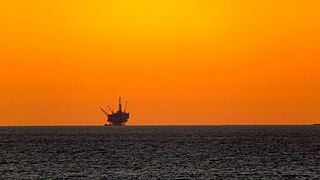 W
WAn oil platform, offshore platform, or offshore drilling rig is a large structure with facilities for well drilling to explore, extract, store, and process petroleum and natural gas that lies in rock formations beneath the seabed. Many oil platforms will also contain facilities to accommodate their workforce. Most commonly, oil platforms engage in activities on the continental shelf, though they can also be used in lakes, inshore waters, and inland seas. Depending on the circumstances, the platform may be fixed to the ocean floor, consist of an artificial island, or float. Remote subsea wells may also be connected to a platform by flow lines and by umbilical connections. These sub-sea solutions may consist of one or more subsea wells or of one or more manifold centres for multiple wells.
 W
WAn accommodation platform is an offshore platform which supports living quarters for offshore personnel. These are often associated with the petroleum industry, although other industries use them as well, such as the wind farm Horns Rev 2.
 W
WByford Dolphin is a semi-submersible, column-stabilised drilling rig operated by Dolphin Drilling, a Fred Olsen Energy subsidiary, and in 2009 contracted by BP for drilling in the United Kingdom section of the North Sea for three years. It is registered in Hamilton, Bermuda.
 W
WCondeep is a make of gravity-based structure for oil platforms developed by engineer Olav Mo in Hoeyer-Ellefsen and fabricated by Norwegian Contractors in Stavanger, Norway. Condeep is an abbreviation for concrete deep water structure. A Condeep usually consists of a base of concrete oil storage tanks from which one, three or four concrete shafts rise. The Condeep base always rests on the sea floor, and the shafts rise to about 30 meters above the sea level. The platform deck itself is not a part of the construction.
 W
WThe Douglas Complex is a 54-metre (177 ft) high system of three linked platforms in the Irish Sea, 24 kilometres (15 mi) off the North Wales coast. The Douglas oil field was discovered in 1990, and production commenced in 1996. Now operated by Eni, the complex consists of the wellhead platform, which drills into the seabed, a processing platform, which separates oil, gas and water, and thirdly an accommodation platform, which is composed of living quarters for the crew. This accommodation module was formerly the Morecambe Flame jack-up drilling rig.
 W
WThe drill floor is the heart of any drilling rig. This is the area where the drill string begins its trip into the earth. It is traditionally where joints of pipe are assembled, as well as the BHA, drilling bit, and various other tools. This is the primary work location for roughnecks and the driller. The drill floor is located directly under the derrick.
 W
WA fixed platform is a type of offshore platform used for the extraction of petroleum or gas. These platforms are built on concrete and/or steel legs anchored directly onto the seabed, supporting a deck with space for drilling rigs, production facilities and crew quarters. Such platforms are, by virtue of their immobility, designed for very long-term use. Various types of structure are used, steel jacket, concrete caisson, floating steel and even floating concrete. Steel jackets are vertical sections made of tubular steel members, and are usually piled into the seabed. Concrete caisson structures, pioneered by the Condeep concept, often have in-built oil storage in tanks below the sea surface and these tanks were often used as a flotation capability, allowing them to be built close to shore and then floated to their final position where they are sunk to the seabed. Fixed platforms are economically feasible for installation in water depths up to about 500 feet ; for deeper depths a floating production system, or a subsea pipeline to land or to shallower water depths for processing, would usually be considered. To see more details regarding Design, construction and installation of such platforms refer to: and
 W
WThe Forties Oil Field is the largest oil field in the North Sea, 110 miles east of Aberdeen. It was discovered in 1970 and first produced oil in 1975 under ownership of British Petroleum, now called BP.
 W
WA gravity-based structure (GBS) is a support structure held in place by gravity. A common application for a GBS is an offshore oil platform. These structures are often constructed in fjords since their protected area and sufficient depth are very desirable for construction. A GBS intended for use as an offshore oil platform is constructed of steel reinforced concrete, often with tanks or cells which can be used to control the buoyancy of the finished GBS. When completed, a GBS is towed to its intended location and sunk. Prior to deployment, a study of the seabed has to be done in order to ensure it can withstand the vertical load exerted on it by that structure.
 W
WIolair is a specialised semi-submersible offshore platform designed for BP to support and service oil platforms in the North Sea and served as an emergency support vessel (ESV) in the Forties Oil Field. Since 2000 it has been working in the Cantarell Field, Mexico as an offshore construction and maintenance service vessel operated by Cotemar S.A de C.V.
 W
WThe Yuri Korchagin field is an offshore oil field in the Russian sector of the North Caspian Sea. The field is located 180 kilometres (110 mi) from Astrakhan and 240 kilometres (150 mi) from Makhachkala at a sea depth of 11–13 metres (36–43 ft). The field is owned and operated by Lukoil–Nizhnevolzhskneft, a subsidiary of Lukoil. The contractor for drilling operations is a Moscow-based company BKE Shelf. The field is named after the former secretary of the company's board of directors.
 W
WA jackup rig or a self-elevating unit is a type of mobile platform that consists of a buoyant hull fitted with a number of movable legs, capable of raising its hull over the surface of the sea. The buoyant hull enables transportation of the unit and all attached machinery to a desired location. Once on location the hull is raised to the required elevation above the sea surface supported by the sea bed. The legs of such units may be designed to penetrate the sea bed, may be fitted with enlarged sections or footings, or may be attached to a bottom mat. Generally jackup rigs are not self-propelled and rely on tugs or heavy lift ships for transportation.
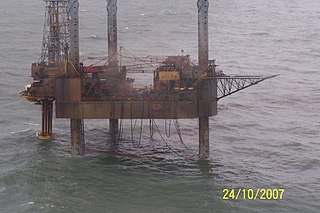 W
WKab 101 is a Sea Pony-type minimum-facilities light-production oil platform operated by Mexican state-owned oil company PEMEX, and installed about 16 miles (26 km) off the coast of Tabasco, near the port of Dos Bocas, in 1994. The platform was designed by British engineering firm SLP Engineering Limited. The platform also produces the wells Kab 103 and Kab 121. This platform was the site of the accident which eventually led to the death of 22 workers. Pemex would contract two independent studies and one by itself and in an exercise of transparency, post the reports on its website. On October 31, 2008, PEMEX released the result of the independent studies of the accident.
 W
WMad Dog Oil Field is an offshore oil field located along the Sigsbee Escarpment at Green Canyon blocks 825, 826 and 782, Western Atwater Foldbelt, Gulf of Mexico. The field is located about 190 miles (310 km) south of New Orleans and 150 miles (240 km) southwest of Venice, Louisiana, United States. It is in the depth of 5,000 to 7,000 feet of water.
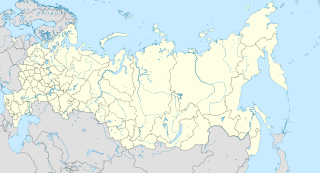 W
WThe Sakhalin-2 project is an oil and gas development in Sakhalin Island, Russia. It includes development of the Piltun-Astokhskoye oil field and the Lunskoye natural gas field offshore Sakhalin Island in the Okhotsk Sea, and associated infrastructure onshore. The project is managed and operated by Sakhalin Energy Investment Company Ltd..
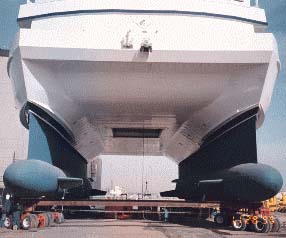 W
WA moon pool is a feature of marine drilling platforms, drillships and diving support vessels, some marine research and underwater exploration or research vessels, and underwater habitats, in which it is also known as a wet porch. It is an opening in the floor or base of the hull, platform, or chamber giving access to the water below, allowing technicians or researchers to lower tools and instruments into the sea. It provides shelter and protection so that even if the ship is in high seas or surrounded by ice, researchers can work in comfort rather than on a deck exposed to the elements. A moon pool also allows divers or small submersible craft to enter or leave the water easily and in a more protected environment.
 W
WNeft Daşları is an industrial settlement in Baku, Azerbaijan. The settlement forms part of the municipality of Çilov-Neft Daşları in the Pirallahy raion. It lies 100 km (62 mi) away from the Azerbaijani capital Baku, and 55 km (34 mi) from the nearest shore in the Caspian Sea. A full town on the sea, it was the first oil platform in Azerbaijan, and the first operating offshore oil platform in the world, incorporating numerous drilling platforms. It is featured in Guinness World Records as the world's first offshore oil platform.
 W
WNorthstar Island is a 5-acre (20,000 m2) artificial island in the Beaufort Sea, 12 miles (19 km) northwest of Prudhoe Bay, Alaska and 6 miles (9.7 km) north of the Alaska coast. The island was created to develop the Northstar Oil Pool, which is located approximately 12,500 feet (3,800 m) below the seabed. The oil pool was discovered on January 30, 1984 by Royal Dutch Shell.
 W
WPerdido is the deepest floating oil platform in the world at a water depth of about 2450 meters operated by the Shell Oil Company in the Gulf of Mexico USA.
 W
WA platform supply vessel (PSV) is a ship specially designed to supply offshore oil and gas platforms. These ships range from 50 to 100 meters in length and accomplish a variety of tasks. The primary function for most of these vessels is logistic support and transportation of goods, tools, equipment and personnel to and from offshore oil platforms and other offshore structures. In recent years, a new generation of platform supply vessels entered the market, usually equipped with Class 1 or Class 2 dynamic positioning system.
 W
WPrirazlomnoye field is an Arctic offshore oilfield located in the Pechora Sea, south of Novaya Zemlya, Russia, the first commercial offshore oil development in the Russian Arctic sector. The field development is based on the single stationary Prirazlomnaya platform, which is the first Arctic-class ice-resistant oil platform in the world. Commercial drilling was planned to begin in early 2012, however it was delayed at least until the Spring of 2013 due to protester's "safety concerns". Safety concerns have been raised about Prirazlomnoye platform, citing use of decommissioned equipment, however Gazprom's oil spill response plan for Prirazlomnaya was renewed in 2014, and most questions found its answers. The Arctic Prirazlomnoye field produced the 10 millionth barrel of Russian North Arctic Oil in March 2016.
 W
WRigs-to-Reefs (RTR) is the practice of converting decommissioned offshore oil and petroleum rigs into artificial reefs. Such biotic reefs have been created from oil rigs in the United States, Brunei and Malaysia. In the United States, where the practice started and is most common, Rigs-to-Reefs is a nationwide program developed by the former Minerals Management Service (MMS), now Bureau of Safety and Environmental Enforcement (BSEE), of the U.S. Department of the Interior.
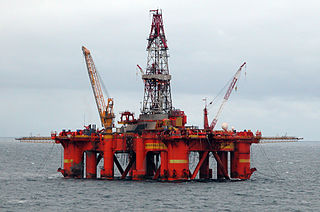 W
WA semi-submersible platform is a specialised marine vessel used in offshore roles including as offshore drilling rigs, safety vessels, oil production platforms, and heavy lift cranes. They have good ship stability and seakeeping, better than drillships.
 W
WA spar is a type of floating oil platform typically used in very deep waters, and is named for logs used as buoys in shipping that are moored in place vertically. Spar production platforms have been developed as an alternative to conventional platforms. The deep draft design of spars makes them less affected by wind, wave and currents and allows for both dry tree and subsea production. Spars are most prevalent in the US Gulf of Mexico; however, there are also spars located offshore Malaysia and Norway.
 W
WA tension-leg platform (TLP) or extended tension leg platform (ETLP') is a vertically moored floating structure normally used for the offshore production of oil or gas, and is particularly suited for water depths greater than 300 metres and less than 1500 metres. Use of tension-leg platforms has also been proposed for wind turbines.
 W
WA wellhead is the component at the surface of an oil or gas well that provides the structural and pressure-containing interface for the drilling and production equipment.